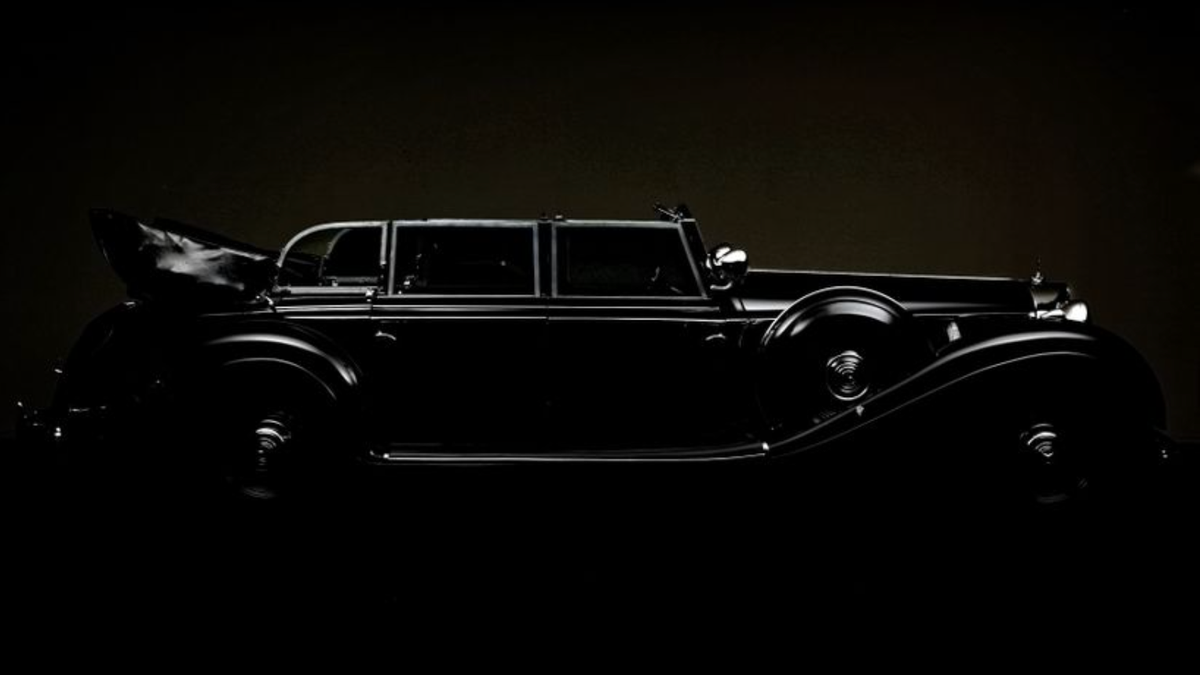Cars don’t deserve a bad rap just because their owners were shitty, but as humans we can’t help but assign significance to objects via their owners. Take this very brief ad for a 1940 Mercedes-Benz Grosser 770 Open Touring Car. It’s an incredible piece of history, but considering its Nazi roots, it might be better suited for a museum than a private collector.
User Richard Bartrop pointed this Hemmings listing out for us in a recent Question Of The Day about most controversial cars you can buy today. And boy, did Richard have a solid argument here. The only picture of the vehicle is the darken one you see up top and the listing in its entirety is very brief, but also very illuminating:
- Special armoured version, customised by the “special vehicle construction” division of Mercedes Benz
- One of only 46 examples built and just five still existing cars known today
- Former government vehicle
- Very original with engine “matching numbers”, original interior and partly first paint
- Commission sheet and expertise from Mercedes Benz Classic available
- Comprehensively restored and technology overhauled
- The most expensive German car of the late 1930s
- Excellent driving characteristics
- Rare and desirable Collectors’ car
An armored car used in the government in 1940s German from a seller in Hamburg? Gee that sounds…like it might just be a Nazi car. While not all Mercedes-Benz 770s were owned by Nazis (other WWII heavyweights like Emperor Hirohito and Pope Pius XI owned 770s and Hitler even provided 770s to fellow fascists around Europe, including Benito Mussolini and Francisco Franco) this one sure seems like a Nazi car.
But even if this 770 belonged to the Pope, anything produced by the company from before 1933 to 1945 can be argued to be the product of that vicious and murderous regime. In a review of one of the first books to adequately address the subject, the New York Times wrote:
‘Leading managers of Daimler-Benz lent valuable assistance to the National Socialists before Hitler became Chancellor in 1933,’’ Mr. Bellon writes. ‘’The corporation even claimed that it was responsible for ‘helping to motorize the movement.’ ‘’ One way the company aided Hitler’s party was to take out large advertisements as early as 1931 in the Nazi newspaper, the Volkischer Beobachter, known for its virulent propaganda and anti-Semitic ti-rades.The author believes that the ads may have been part of a quid pro quo arrangement under which Daimler-Benz cars were given or lent to Hitler and his party’s officials.
The three-pointed Mercedes emblem and the Nazi swastika were paired in the eyes of the German volk, according to the evidence in the book. ‘’The company itself was a personal favorite of the Fuhrer, who generally rode in Mercedes cars, as did the rest of his entourage,’’ Mr. Bellon says. Jakob Werlin, an associate director of the company, was a personal friend of Hitler whose ties with the Fuhrer dated back to the 1923 putsch. When Hitler left the Landsberg penitentiary in 1924, the author notes, Werlin picked him up at the prison gates. According to American intelligence documents obtained by Mr. Bellon under the Freedom of Information Act, Hitler held a portfolio of Daimler-Benz stocks, which Werlin personally administered for him.
By examining the fate of the trade unions in the Daimler-Benz factories, the book traces the way the fortunes of the company and affairs of state were linked. When the Nazis came to power, they destroyed the unions and related institutions – including factory councils and arbitration committees – that had shaped the industrial order since World War I. A new order was introduced, by legislation, that established a system of work based upon fear, reward and discipline.
Top management at Daimler-Benz welcomed the military buildup under National Socialism; the company became the leading armaments maker in Nazi Germany. Airplane motors and spare parts, tanks and armored vehicles, heavy trucks and even a major section of the V-2 rocket were produced for the Third Reich’s war machine. As the war progressed, booty from companies like Peugeot, the French auto maker, was taken to Germany.
‘’On a massive scale, Daimler-Benz threw tens of thousands of men and women, including foreign workers and concentration camp inmates, into the battle to produce engines for the German air force,’’ Mr. Bellon writes. Daimler-Benz used Jewish women from the concentration camps at Ravensbruck and Sachsenhausen as worker-slaves. One group of female inmates working at Daimler-Benz was moved back to Sachsenhausen in the final weeks of the war, apparently to be gassed. They survived to tell the tale when the camp’s gas chamber failed to function.
I’ve reached out to Hemmings to hopefully speak to the owner and learn more about this vehicle as, no matter what their origins, they are very rare. Only a few are in private hands, which is probably a good thing. If any car ever belonged in a museum with about a dozen placards putting it into context, it’s this one.

